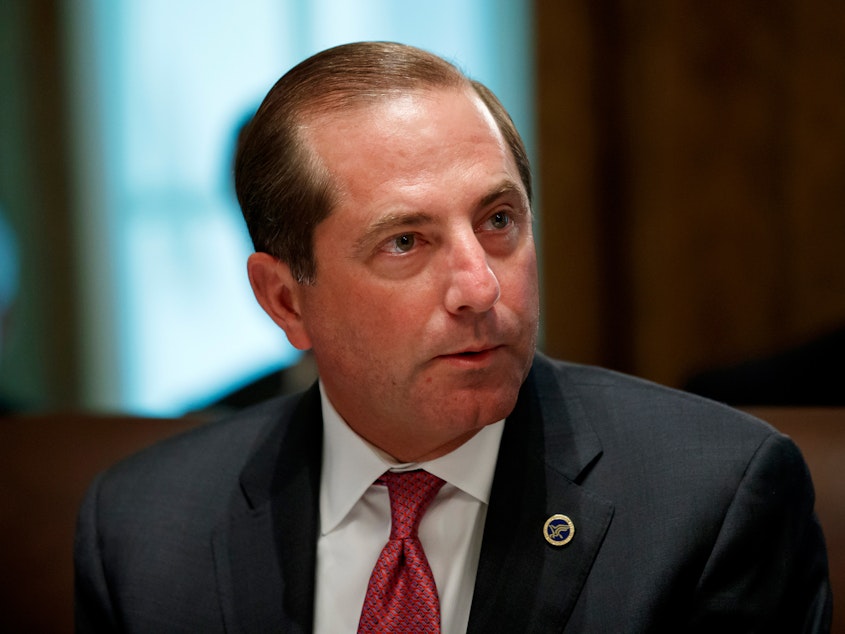As China's Coronavirus Cases Rise, U.S. Agencies Map Out Domestic Containment Plans

China has reported a large surge of cases of the novel coronavirus – upping its count from under 3,000 to over 4,500 as of Tuesday morning. More than 100 deaths have also been reported. It is spreading rapidly in many provinces, and sporadic cases have now been reported in 18 other locations outside of China – from Australia and France to Canada.
In the United States, the case count remains at five – all among people who had recently returned from Wuhan, China. And a at a news conference today, top U.S. health officials reiterated that the disease – while serious – is not currently a threat to ordinary Americans.
"At this point Americans should not worry for their own safety," said Alex Azar, secretary of the department of Health and Human Services at the press briefing Tuesday.
While risk to most Americans remains low, Dr. Nancy Messonnier, the director of the National Center for Immunization and Respiratory Diseases at the Centers for Disease Control and Prevention, noted that, "risk is dependent on exposure," adding that health care workers or others who know they have been in contact with a person exposed to the virus should take precautions.
The federal government continues to adjust its approach to preventing the disease from taking hold in the U.S. Monday night the CDC and the State Department announced that a travel advisory recommending that Americans avoid travel to China when at all possible.
Sponsored
Airport screening is also being expanded from five airports to 20, with the goal of screening all passengers returning from China and letting people know what they should do if they fall ill after they get home.
The CDC is conducting contact investigations of people known to have been in contact with the five patients with confirmed infections, monitoring them for symptoms and testing them if concerning symptoms emerge.
Officials at the CDC are eager to get into China in order to help scientists there answer key questions – such as whether the virus can spread from people who don't show any symptoms of illness. Azar said at the news conference that he had been pressing his counterpart in China for permission to send investigators.
That plea has been answered, at least to a certain extent. Tuesday the World Health Organization announced that it had the green light to send outside experts to China. It was not immediately clear whether that will include scientists from the CDC.
Dr. Anthony Fauci, director of the National Institute of Allergy and Infectious Diseases, explained that federal agencies are taking a three-pronged approach to respond to the novel coronavirus: developing and improving diagnostic tests, investigating experimental anti-viral drugs, and working to develop a vaccine.
Sponsored
He said if it turns out that the virus can spread from someone who is not showing any symptoms, that would lead to some changes in the public health response. Similar coronaviruses from past outbreaks – SARS and MERS – did not spread in the absence of symptoms, but that doesn't mean the new one will behave the same way. But other viruses, such as measles and influenza, can be spread from people who aren't showing signs of disease.
"Even if there is some asymptomatic transmission, in all the history of respiratory borne viruses of any type, asymptomatic transmission has never been the driver of outbreaks," Fauci said. "The driver of outbreaks has always been a symptomatic person."
You can contact NPR Science Correspondent Richard Harris at rharris@npr.org. [Copyright 2020 NPR]



